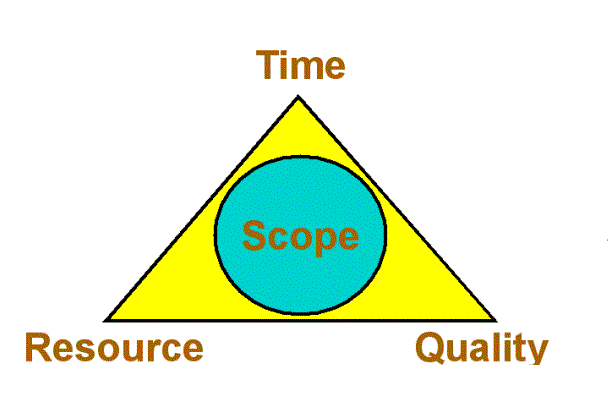How to Initiate Projects Successfully (Part I)
 Recently I read an interesting project research report showing that a large percentage of projects [of any kinds] were dismissed before they hardly reached the Planning phase. The report investigated that the most common reason of failures with the Initiation phase referred to improper definition of the scope which resulted in the lack of sponsorship and investments required to ensure success of those projects.
Recently I read an interesting project research report showing that a large percentage of projects [of any kinds] were dismissed before they hardly reached the Planning phase. The report investigated that the most common reason of failures with the Initiation phase referred to improper definition of the scope which resulted in the lack of sponsorship and investments required to ensure success of those projects.
Taking into account that report as well as using my own experience and knowledge, I would like to say that it’s critical to understand the importance of the project initiation phase and know which steps can be taken to successfully go through this phase and initiate a project as quickly and efficiently as possible.
As a good manager, you should realize how to initiate projects successfully, get sponsorship support, conduct a technical feasibility study, collaborate with teams and stakeholders, develop and share necessary project initiation documents, and so on. I’d like to help you with all those initiatives. Below I give a list of the key steps you can take to reach success in managing the project initiation process. Please note I divided my article into two parts, so this is the 1st part. At the end of this article you can see a link to the 2nd part.
- Make a Business Case
- Investigate and set the business problem, or opportunity
- Identify alternative solutions available
- Identify the benefits and costs around each of the solution
- List and submit recommended solutions to the sponsor for approval
- Identify and describe any threats and uncertainties with implementation
- Submit the solutions for project funding approval
- Conduct a Feasibility Study
- Set and document the business requirements for a solution
- Research the factors that influence the project feasibility
- Investigate each alternative solution to determine its feasibility
- Assess risks and issues with each solution
- Select a preferred solution for implementation
- Develop a feasibility report and document results to initiate projects
- Develop the Project Charter
- Document detailed instructions (task lists and activities descriptions) for achieving each deliverable
- Develop tables and spreadsheets that cover all necessary technical and financial calculations
- Describe role definitions and responsibilities
- Document a sample project implementation plan
- Build the project organization chart
- Specify recommendations and guides
Developing a comprehensive business case is the first necessary step within the project initiation phase. A business case is a formal document that outlines the business problem or opportunity to be addressed by the project and available alternative solutions for addressing/exploiting the problem/opportunity. The business case brings a foundation for project activities and formally documents the reasons behind the creation of the project as well as the key benefits to be obtained and the costs required. It also specifies a list of recommended solutions for approval.
Being a component of project initiation documentation, the business case is to be actually developed and formally approved by the sponsor. The project manager does not take direct responsibility for business case development, but in some cases this person may participate as a consultant or expert in the development process. Project initiation templates are usually used to develop the business case. Once the document is produced and approved within the initiation phase, necessary funds are to be allocated to the project.
The development of the business case pursues these goals:
A feasibility study is an initiation document that describes the technical, economic, legal, operational and scheduling background of the project and is aimed at proving the success of project completion on time, within budget and as per technical specifications. The document also determines and investigates the impact of external factors (such as Market, Competition) to the project and summarizes a solution. The feasibility study specifies a preferred solution that is to be approved by the sponsor.
This document is to be developed by a group of experts under supervision of the project manager. Usually PM software is used to develop the document using project initiation templates. A feasibility study template is a set of actions and steps to be taken to estimate the probability of the alternative solutions to produce the expected benefits specified in the business case.
The development of the feasibility study within the initiating phase is aimed at achieving the following goals:
Once both the problem (or opportunity) in the business case and the solution in the feasibility study are investigated and identified, project activities can be initiated to address the problem and produce the solution. At this step, the Project Charter is to be developed. This is the primary project initiation document that sufficiently specifies what tasks and activities the project actually starts and what the boundaries of project work are. The document also shows what objectives, scope and deliverables are to be achieved within the project. It gives a clear vision to the stakeholders.
During development of the Project Charter, the project manager needs to consider the project organization activities and prepare an implementation plan that covers all the tasks and jobs required to produce the deliverables. This person can use PM software to create a project initiation template for the Project Charter and work collaboratively on content of the template. Such a template can be shared with the stakeholders if required.
Typically, the Project Charter is targeted at reaching the following goals:
Go to Part II of my article.













